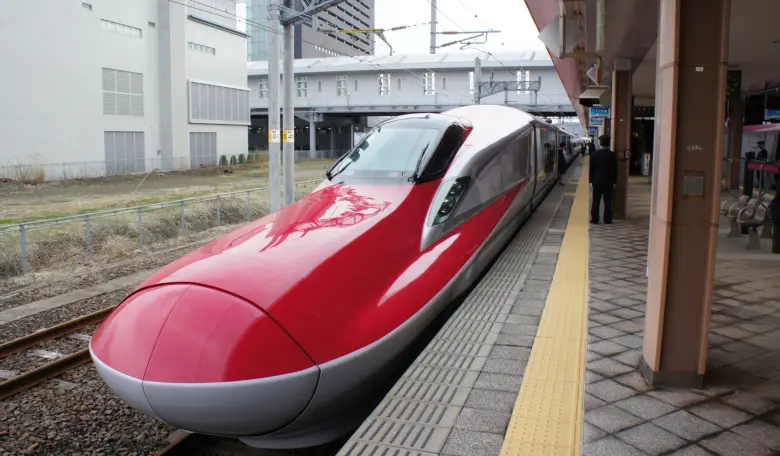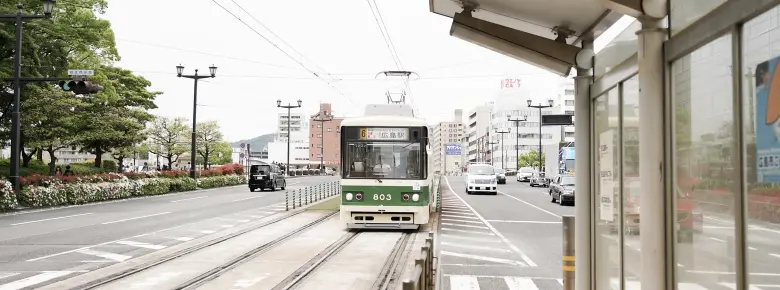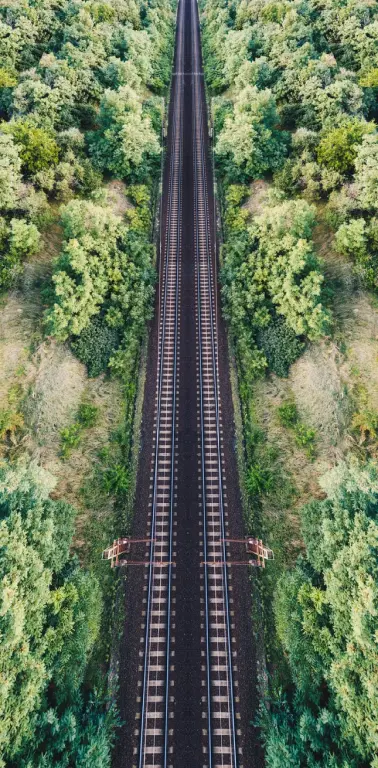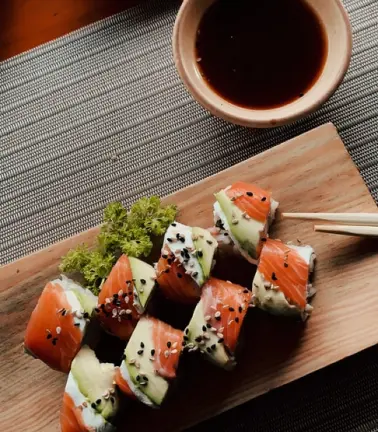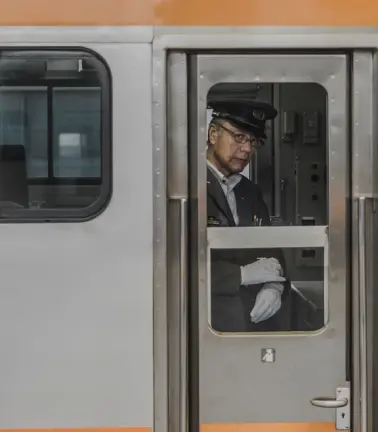The JR East Lines and Services that Visitors Should Know
The JR East covers large parts of Japan. There are some important lines and services that international tourists will want to know before their trip.
About the JR East
The East Japan Railway Company, or JR East, is a company within the Japan Railways Group, or JR Group, that manage intercity and commuter trains throughout Japan. JR East is in charge of regional and high speed trains in the Kanto, Tohoku and Koshin'etsu regions of the country. This makes it the largest of the companies and regions in the JR network.
Covering a large section of the island of Honshu, JR East is a major rail region to be aware of. After all, it not only includes the national capital Tokyo, but also everywhere north of Tokyo all the way to the Tsugaru Strait. Destinations like Sendai, Niigata and Aomori are all within its zone. But it also stretches out west as far as Nagano and Shizuoka, meaning you very well may travel on a JR East train if you visit Japan.
JR East has only been around since 1987, when the previous organisation Japanese National Railways was privatised by the Government. Since then it has been one of the seven companies that together manage the majority of Japan's railway network. However, since JR East has responsibility for the Greater Tokyo Area and the large Tohoku region, it has long been one of the most important rail areas.
Of course, the JR East railway network is also connected with some of the other JR networks around the country. For instance, there are trains operated by JR East that continue onto the island of Hokkaido, where JR Hokkaido takes over. Similarly, there also train services that begin in JR East and continue into JR Central and JR West, reaching destinations like Nagoya, Osaka and Kyoto.
JR East Lines
JR East Shinkansen Lines
High speed trains known as bullet trains or shinkansen are the ultimate way to quickly travel through Japan by train. Shinkansen lines connect up many different parts of Japan and so there are quite a few operated by JR East. Here is each shinkansen lines within the JR East area:
- Tōhoku Shinkansen: Connects Tokyo with Aomori, covering the north-eastern part of Honshu with six train services.
- Jōetsu Shinkansen: Goes from Tokyo to Niigata on the Sea of Japan, with two services stopping at Ueno, Omiya and Nagaoka.
- Yamagata Shinkansen: Travelling from Tokyo to Shinjo station in Yamagata, this is a branch line of the Tohoku Shinkansen with a single service.
- Akita Shinkansen: Another branch line of the Tohoku Shinkansen, this mini-shinkansen has a single service from Tokyo to Akita.
- Hokuriku Shinkansen: Jointly operated with JR West, this line and its four services runs from Tokyo and stops at Nagano and Toyama on its way to Kanazawa.
There are also shinkansen lines that run through the region but are operated by other companies, such as the Tōkaidō Shinkansen and the Hokkaido Shinkansen.
JR East Network
Besides bullet trains, Japan’s rail network is made up of regional, intercity and commuter trains that help people get around cities, suburban areas and reach smaller destinations within the region. There are many, many different train lines of this type throughout JR East. To give you a sense of its size, there are 36 train lines in the Tokyo area operated by the East Japan Railway Company alone.
Rather than describe each JR East line in detail, below are some important lines in the Kanto region (i.e., greater Tokyo area) that international tourists will want to know about for their trip.
Yamanote Line
Much like the Narita Express train, the JR Yamanote Line is a godsend for those looking to get around Tokyo. The Yamanote Line is a train that runs a loop around Tokyo’s city centre, allowing you to easily get between different neighbourhoods. Looking at the Yamanote Line map, visitors will no doubt recognise parts of the city popular with tourists like Akihabara, Ueno, Shinjuku, Harajuku and Shibuya. With the Yamanote Line Tokyo couldn’t be easier to explore.
Nikkō Line
Along with commuter trains around the Greater Tokyo Area, there are regional trains like the Nikko Line. Running from Utsunomiya to the city of Nikkō, this is the train to take if you want to experience the many temples and beautiful nature of Nikko.
Chuo Main Line
One of the core train lines in Japan is the Chuo Main Line, connecting Tokyo with Nagoya. Due to the length of the route, it passes through two different train networks, JR East and JR Central. The eastern section managed by JR East, from Tokyo to the city of Shiojiri, is therefore known as the Chūō East Line. Both local and rapid services operate along here, which we’ll get into below.
Chuo Sobu Line
The names of train lines can get a little confusing and none are more confusing than the Chuo Sobu Line. This train line that runs from Mitaka Station between the cities of Mitaka and Musashino and Chiba Station, actually owes its name to other train lines. Its name comes from the Chuo Main Line and the Sobu Main Line because it travels parallel to those lines, just on its own separate tracks.
Unlike either of those lines, the Chuo-Sobu Line crosses paths with the Yamanote Line, which can come in very handy when in Tokyo. However, it doesn't go to Tokyo Station unlike the other two. It’s also important to understand that most train services on the line are slow local trains, so the other lines are more convenient for quickly getting about.
Keihin-Tohoku Line
Travelling through the Kanto region is easily done thanks to the Keihin–Tōhoku Line. This line includes major cities like Saitama, Kawaguchi, Tokyo, Kawasaki, and Yokohama, while there is often a through service that continues on from Yokohama to Ōfuna.
Keiyo Line
Following the edge of Tokyo Bay is the Keiyo Line, one part of the so-called “Tokyo Mega Loop”. This train line runs from Tokyo Station to Chiba, but tourists will likely find it most useful for getting to the Tokyo Disney Resort or the Makuhari Messe exhibition centre. Keiyo has four different services that operate along it, two rapid services and two local trains stopping all stations.
Nambu Line
Another part of the JR East Tokyo Mega Loop is the Nambu Line. Trains run from Tachikawa Station way out in the western edges of Tokyo down to Kawasaki Station in Kawasaki, mostly following the Tama River. Most services along this line are local services, with just two rapid train services each hour.
Sobu Main Line
Sometimes referred to as the Sobu Line, the Sobu Main Line takes passengers from Tokyo right out to east coast of the Chiba Prefecture. Along its route are cities like Funabashi, Chiba, and Chōshi, with trains departing Ochanomizu in Tokyo and terminating at Chōshi. Rapid train services, also known as the Sōbu Rapid Line, mostly only run to Sakura station or Naruto station east of Chiba. The rest of the stop out to Chōshi require you take a local train.
Tohoku Main Line
Not to be confused with the Keihin-Tohoku Line or the Tohoku Shinkansen, the Tohoku Main Line runs from Ueno station in Tokyo all the way up to Morioka station in Iwate Prefecture. This long route takes it to many important cities like Saitama, Utsunomiya, Fukushima, and Sendai, following much the same path that the Tohoku Shinkansen does.
It’s worth knowing that the section from Ueno station to Kuroiso Station in Tochigi Prefecture is often known as the Utsunomiya Line, even though it’s not actually a separate line.
Tokaido Main Line (Tokyo - Atami)
One of the most significant train lines in Japan is the Tokaido Main Line, running from Tokyo to Kobe. Because of its great length, it actually spreads across three different rail networks: JR East, JR Central and JR West. The JR East section covers the line between Tokyo and Atami and as such, is known as the Tokaido Main Line (Tokyo – Atami). Two rapid services, Rapid Acty and Commuter Rapid, run alongside local services on the line.
Yokosuka Line
If you’re looking to reach the Miura Peninsula then you’ll want to take the Yokosuka Line. Running from Tokyo Station with Kurihama in Yokosuka, with only local services operating along it.
JR East Train Services
For each of the train lines that operate within the JR East region, there are multiple different train services that run. Each service stops at different stations, either sticking to a single train line or connecting across multiple train lines.
Narita Express
Connecting Tokyo and Narita International Airport, the JR Narita Express or N’EX is a convenient option for airport transfers. With the Narita Express, you can reach places in Tokyo like Tokyo Station, Shibuya and Shinjuku. Getting the Narita Express to Shinjuku from the airport takes around 50 minutes and the Narita Express schedule has trains running every 30 minutes most of the time.
Odoriko
The Odoriko Limited Express service that operates from Tokyo to Izukyu-Shimoda and Shuzenji. There are three services that depart for Izukyu-Shimoda that take around 3 hours, while there are two services that decouple at Atami to head for Shuzenji, taking a little over 2 hours. Besides its regular service, there is also the Saphir Odoriko that offers passengers a more deluxe experience. The Odoriko service travels over the Tōkaidō Main Line, Itō Line, Izu Kyūkō Line and Sunzu Line.
Azusa & Kaiji
Two train services that take you into the mountainous interior of Honshu are the Azusa and Kaiji services. Both services operate as limited express services on the Chuo Main Line, running from Shinjuku in Tokyo to Matsumoto Station and Kofu Station respectively. The Azusa Limited Express runs every 30 minutes and takes around 3 hours to reach Matsumoto. Not travelling quite as far, the Kaiji Limited Express goes every hour and only takes 2 hours.
Chuo Rapid Line
While there are several different services that take the Chuo Main Line shared by JR East and JR Central, an interesting one is the Chuo Line rapid service. This rapid service runs from Tokyo to Takao Station in the city of Hachiōji, right at the foot of Mt. Takao. Those looking for somewhere to go hiking while in Tokyo often take the Chuo rapid service to hike up Mt Takao.
Using the JR Pass on JR East Trains
You will naturally need a valid ticket to travel on JR East trains or any trains in the JR network. There are two different options for international visitors when it comes to this. Either you buy a new ticket each train journey, or you invest in a JR Pass. You can find out which is the best choice for your itinerary using our JR Fare Calculator.
With a pass you can enjoy unlimited travel for its duration on valid train lines and services. The standard JR Pass provides access to shinkansen and trains across Japan, not just the Japan East lines. However, there is also a special regional JR East pass called the JR East-South Hokkaido Rail Pass. This dedicated JR East rail pass is for people who only want to visit the Tohoku region or reach Sapporo.
Another benefit of this Japan Rail east pass is that you don’t need to pay any special JR East reservation fee for seats; you can freely make seat reservations as part of it. It’s important to note however, that the regional pass doesn’t include everywhere in the JR East region, such as Nagano or Niigata.
You can begin planning your trip by visualizing your route with our JR Map.
JR East Train Cars
Sometimes the experience of taking a train journey is just as, or even more, important than the destination. That is certainly the case with some of the special train cars and luxury trains operated by JR East.
Saphir Odoriko
The Saphir Odoriko train is a wonderful resort excursion train, travelling from Tokyo down the scenic coastline of the Izu Peninsula. Onboard the train, all seats are first class Green Seats, with a spacious 1 + 1 seating layout, and private compartments are available for even more privacy.
The train replaces the older Odoriko view, Super View Odoriko and Izu Craile services on the same route.
Shiki Shima
Train travel has always had a luxury element to it, something that’s alive and well on the Shiki Shima luxury train. Operating special two to four day tours, the Shikishima or Train Suite Shiki-Shima as it’s fully known, surrounds its guests with the trappings of luxury.
Train cars are lavishly furnished with superb craftsmanship and artwork, while fine cuisine is on the menu in the grand dining car. Interestingly, the Shiki Shima train toes the line between modern and traditional in much the same way Japan does.
